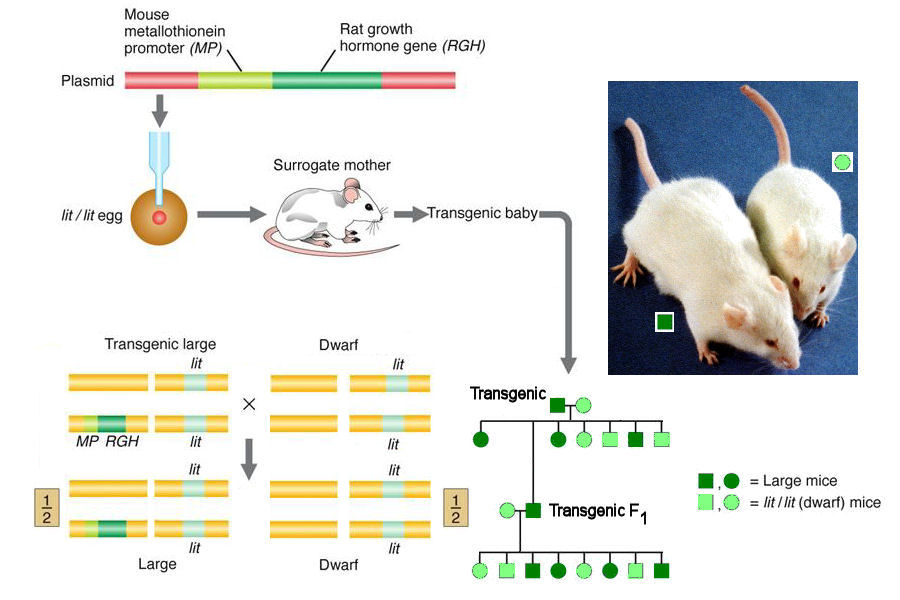
"Gene Therapy": production of transgenic mice

"Gene Therapy": production of transgenic mice
Mice homozygous at the LIT locus for
a
recessive allele lit
grow at a slow rate. An artificial plasmid
(top left) is constructed that combines a Rat Growth-Hormone
(RGH)
gene fused to a mouse Metallothionein Promoter (MP)
gene.
A large number of these plasmids are then injected into
fertilized eggs
of mice, which are then implanted into a surrogate mother. In a
small
fraction of eggs, the plasmid is integrated
into one of the mouse chromosomes. Exposure of these
embryos to heavy-metal ions
activates the MP
promoter, which in turn
stimulates transcription and expression of RGH.
The resulting transgenic
offspring
(left-hand mouse)
weighs 44g,
whereas
its
control
sibling weighs only 29g. The RGH transgene
shows
dominant
epistasis to the LIT locus,
which is on a different chromosome. In this case, the RGH locus
"cures" the genetic
effect of the LIT locus.
Transgenes are
integrated at random into the host chromosomes, and may be
edited out or
spontaneously excluded during chromosome replication. Stable integration of
the transgene can be tested by a genetic cross. Because the transgenic RGH
locus is not linked to the lit locus, a
back-cross of the transgenic mouse to a lit / lit
homozygote
should produce a 1:1 ratio
of Large
: little mice in
the F1
generation. If the F2 backcross generation also
produces
a 1:1 ratio, this
indicates
that incorporation of RGH is stable
and is inherited between generations.
Homework:
Is
it correct to call this procedure a "therapy"
for
dwarf mice? Explain.